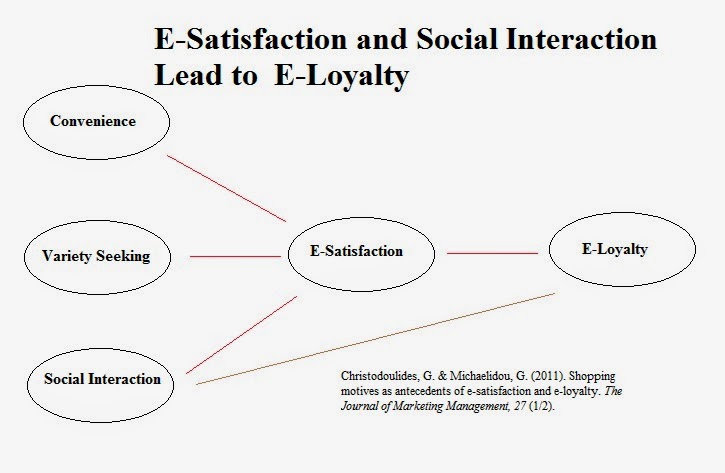Retailers and service providers are moving online in
an attempt to raise their financial performance. The online world has some
different methods of marketing that help to retain customers. In the online world
where there are low switching costs companies will need to spend a greater
portion of their efforts on customer retention.
A study by Christodoulides and Michaelidou (2011) helps better
understand what companies must do to create e-satisfaction and e-loyalty.
Companies spend nearly double the amount of their
budgets on new customer acquisition while spending half that amount retaining
existing customers (Forrester Research, 2008). As a general rule, the cost of
gaining new customers is about five times the cost of retaining current
customers (Strauss, et. al. 2006). The
existing customers have long tail value and should receive greater emphasis in
future strategic considerations.
How e-companies retain their
customers is an important consideration for boosting revenue. Previous research has indicated that trust, customer
service, website and technology, customization, switching barriers,
e-satisfaction, and image are key components to successful customer retention.
When companies can effectively carry a strong brand, matched with technology,
and offer customizable products/services they are more likely to keep their
customers coming back.
Through the analysis of 797 the authors found that
e-satisfaction was positively associated with e-loyalty. They also found that convenience,
variety and social interaction help create e-satisfaction and slowly encourage
e-loyalty. The more convenient the shopping experience the more likely e-satisfaction
will rise. When shopping motives are strong and e-satisfaction is high there
will likely be more loyalty to e-retailers. E-satisfaction has some of the highest levels
of association with e-loyalty.
Christodoulides, G. & Michaelidou,
G. (2011). Shopping motives as antecedents of e-satisfaction and e-loyalty. The Journal of Marketing Management, 27
(1/2).
Forrester Research (2008). The state of retailing online: Marketing
report Forrester Research. Inc. Cambridge, MA.
Strauss, J., El-Ansary, A., & Frost, R. (2006). E-marketing. Upper Saddle River, NJ.

No comments:
Post a Comment